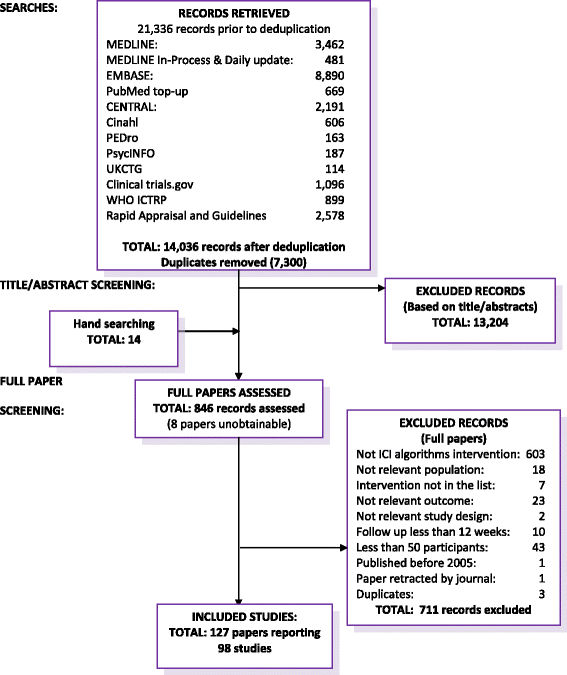Can incontinence be cured? A systematic review of cure rates
- PMID: 28335792
- PMCID: PMC5364653
- DOI: 10.1186/s12916-017-0828-2
Can incontinence be cured? A systematic review of cure rates
Abstract
Background: Incontinence constitutes a major health problem affecting millions of people worldwide. The present study aims to assess cure rates from treating urinary (UI) or fecal incontinence (FI) and the number of people who may remain dependent on containment strategies.
Methods: Medline, Embase, PsycINFO, Cochrane Central Register of Controlled Trials (CENTRAL), CINAHL, and PEDro were searched from January 2005 to June 2015. Supplementary searches included conference abstracts and trials registers (2013-2015). Included studies had patients ≥ 18 years with UI or FI, reported treatment cure or success rates, had ≥ 50 patients treated with any intervention recognized in international guideline algorithms, a follow-up ≥ 3 months, and were published from 2005 onwards. Title and abstract screening, full paper screening, data extraction and risk-of-bias assessment were performed independently by two reviewers. Disagreements were resolved through discussion or referral to a third reviewer where necessary. A narrative summary of included studies is presented.
Results: Most evidence was found for UI: Surgical interventions for stress UI showed a median cure rate of 82.3% (interquartile range (IQR), 72-89.5%); people with urgency UI were mostly treated using medications (median cure rate for antimuscarinics = 49%; IQR, 35.6-58%). Pelvic floor muscle training and bulking agents showed lower cure rates for UI. Sacral neuromodulation for FI had a median cure rate of 38.6% (IQR, 35.6-40.6%).
Conclusions: Many individuals were not cured and hence may continue to rely on containment. No studies were found assessing success of containment strategies. There was a lack of data in the disabled and in those with neurological diseases, in the elderly and those with cognitive impairment. Surgical interventions were effective for stress UI. Other interventions for UI and FI showed lower cure rates. Many individuals are likely to be reliant on containment strategies.
Prospero registration: PROSPERO registration number: CRD42015023763 .
Keywords: Cure rates; Incontinence; Systematic review.
References
-
- Milsom I, Altman D, Cartwright R, Lapitan MC, Nelson R, Sillén U, et al. Epidemiology of urinary incontinence (UI) and other lower urinary tract symptoms (LUTS), pelvic organ prolapse (POP) and anal (AI) incontinence. In: Abrams P, Cardozo L, Khoury S, Wein A, et al., editors. Incontinence: 5th International Consultation on Incontinence, Paris February 2012. 5. Paris: Health Publications Ltd.; 2013.
Publication types
MeSH terms
Grants and funding
LinkOut - more resources
Full Text Sources
Other Literature Sources
Medical


